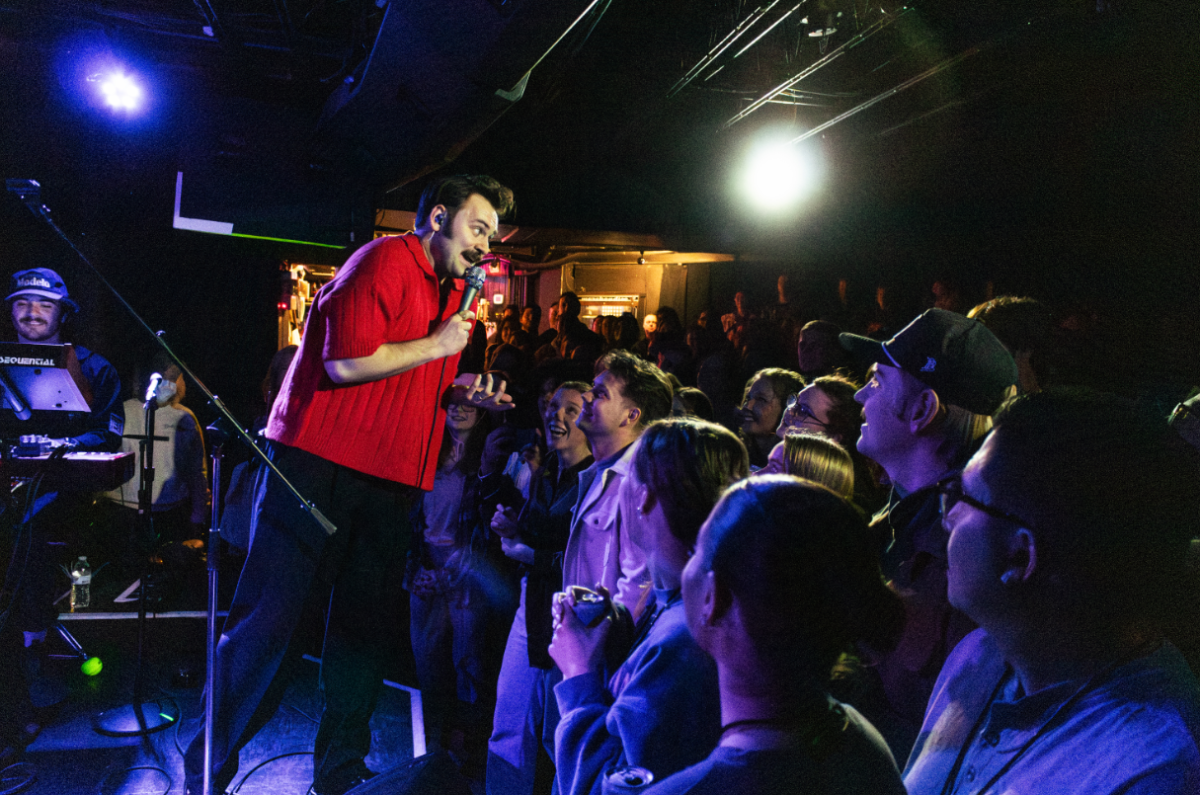What is souvlaki? What’s a Greek church doing in land-locked Minneapolis? How many gyros can one person eat in a day?
A&E visited the Taste of Greece Festival this weekend to answer these questions.
Just east of Bde Maka Ska (formerly Lake Calhoun), festival-goers sipped Greek wine flights and watched the sun set from the terrace. It was the closest the Twin Cities could come to resembling Santorini.
“The festival is to show people what Greek Orthodoxy is about,” parishioner Dean Dovolas said. “It’s uplifting — the focus [of the church] is on forgiveness rather than punishment.”
Although it took place at a church, the focus of the festival was on the savory elements of Greek culture. For the sake of the festival, Christianity remained in the background.
The Levendes band played to a cheery audience of circle-dancers and gyro-snackers. The three band members have played together for 43 years.
“The more people that dance, the better,” John Trigas said, who plays the bouzouki (a classical Greek instrument that resembles a fiddle). In the past few years, Trigas left banking to perform full-time, moving back and forth between Minneapolis and New Orleans.
His advice for the people with two left feet that want to participate?
“Find someone who can dance and hang on.”
And we haven’t even gotten to the food yet.
The festival, run by volunteers, boasted a full dinner menu with shish-kabobs, spanakopita (spinach pie wrapped in flaky dough) and more.
Greek spots throughout Minneapolis, like Christos on Nicollet Avenue and Bill’s Imported Foods on Lake Street, had a place at the festival table, but many of the cooks didn’t even have restaurants in the Twin Cities.
Konstantinos Papadakis, a chef at the festival, has been a member of the church since he moved to Minneapolis from Athens 30 years ago, in the dead of winter “with no coat and thin-soled Italian shoes.”
But he’s made it this far, and now he cooks souvlaki — “grilled pork shish-kabob served with tomato, onion, and tzatziki (cucumber) sauce on fresh pita bread” — for hungry festival visitors every year, though he is a woodcarver.
And when they said fresh pita, they meant it.
Many people also wandered around munching on desserts like Loukoumathes, which are fried Greek-style doughnuts dipped in hot honey and sprinkled with cinnamon.
A large portion of the treats was thanks to the Yia-Yias, or grandmothers, who spent months preparing and freezing treats for the festival.
Once visitors had their fill of delicacies, they headed into the main building for the Greek Boutique to ogle jewelry and housewares.
The festival attracted parishioners and nonbelievers, Greeks and non-Greeks throughout Minnesota.
“The modern world is a little divorced from the idea of community,” Dovolas said.
He hopes people will recognize the importance of the community the church offers.
What does St. Mary’s hope visitors of the festival will take away from it?
“The culture,” Dovolas said. “Music, dance, food.”









